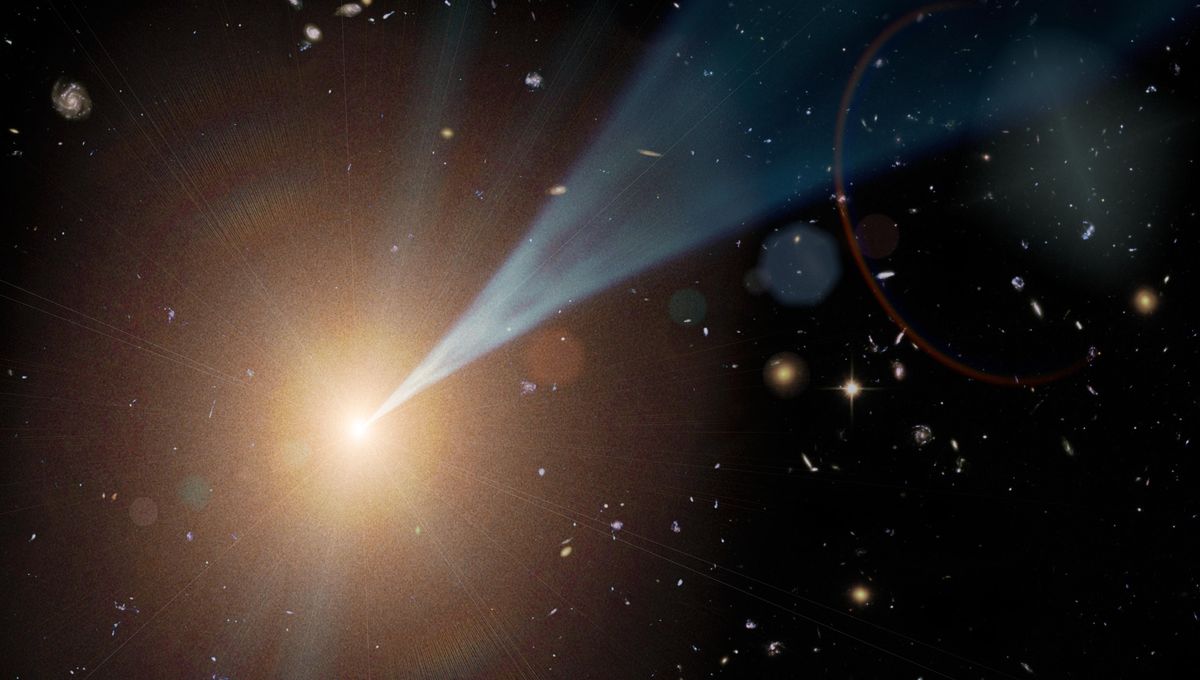
Astronomers had to reclassify a galaxy this week because something almost unique happened at its center. Its active supermassive black hole has a jet, and it is no longer pointing in the same direction it used to. It is now pointing at us, after a major change.
The galaxy is called PBC J2333.9-2343 and is located 657 million light-years away. It was classified as a giant radio galaxy because once upon a time, its supermassive black hole released jet material creating two vast lobes on either side of the galaxy, extending for 4 million light-years. For context, our own galaxy, the Milky Way, is 105,000 light-years across.
The jet was perpendicular to our line of sight when these lobes were created. So, imagine their surprise when astronomers looked at the galaxy and saw the jet pointing right at Earth. Somehow it must have shifted by an angle of up to 90 degrees.
“We started to study this galaxy as it showed peculiar properties. Our hypothesis was that the relativistic jet of its supermassive black hole had changed its direction, and to confirm that idea we had to carry out a lot of observations,” Dr Lorena Hernández-García, lead author of the paper and researcher at the Millennium Institute of Astrophysics, said in a statement.
Galaxies whose jets point at us are called blazars. The emission of these jets is often so powerful that it can outshine the galaxy that hosts the supermassive black hole. A blazar has high-intensity flares that can outdo radio features like the lobes. But in the case of this galaxy, the lobes are the dominant feature when observed with radio waves. Only follow-up observations with different telescopes revealed the blazar’s nature, hence the need for reclassification.
“The fact that we see the nucleus is not feeding the lobes anymore means that they are very old. They are the relics of past activity, whereas the structures located closer to the nucleus represent younger and active jets,” Hernández-García added.
So how did this shift happen? The most likely hypothesis, according to the researchers, is a merger event, meaning the galaxy collided with another. Another option is that an intense burst of activity after a dormant period might have pushed the supermassive black hole onto a new axis.
More observations will be needed to model this peculiar galaxy and its shifting supermassive black hole.
The study is published in the Monthly Notices of the Royal Astronomical Society.
Source Link: Galaxy Gets Reclassified Now Its Supermassive Black Hole Is Shooting Straight At Us